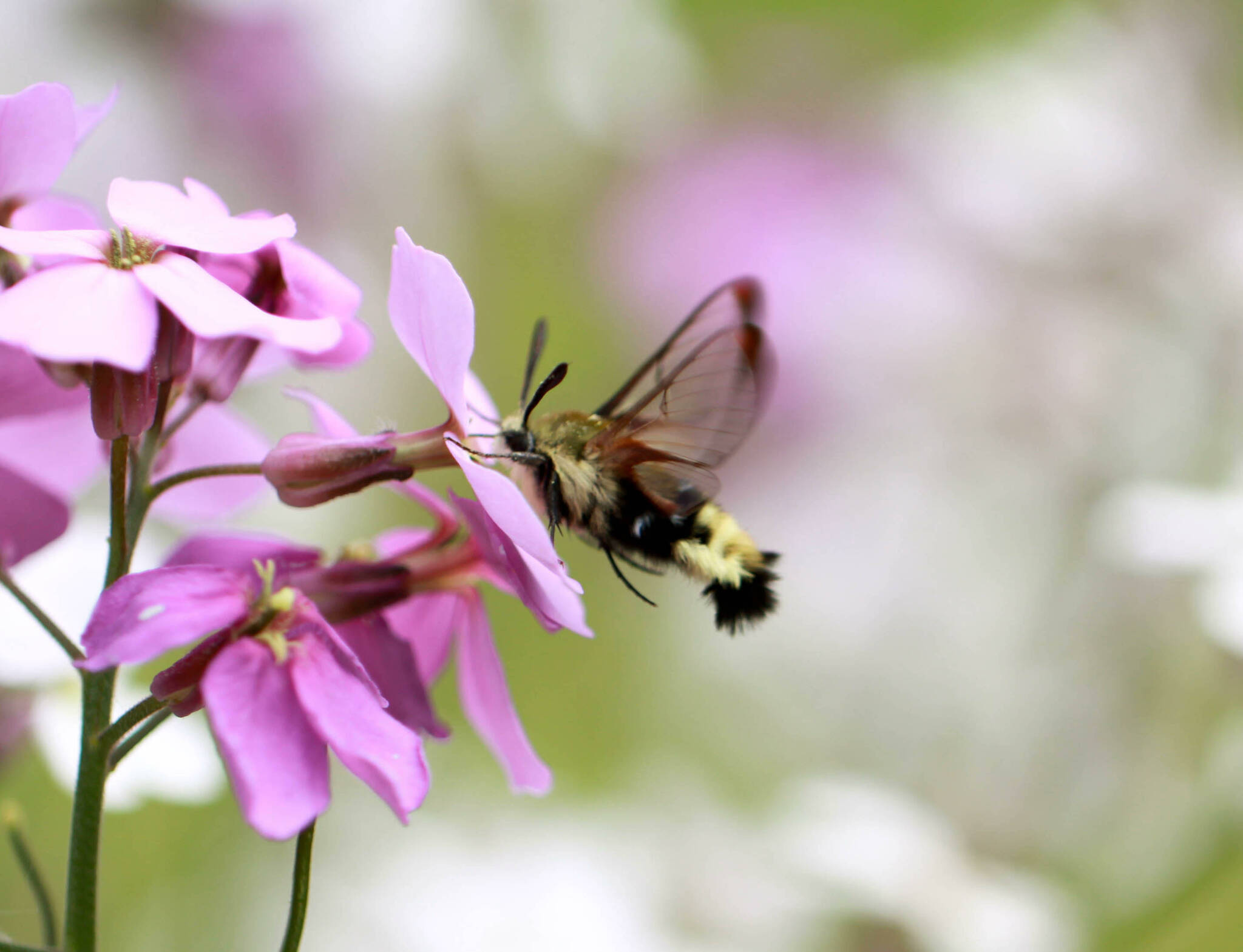The vision that usually comes to mind when one hears the word “pollinators” are bees and butterflies. These extraordinary creatures can be observed during the day visiting blossoms. As they forage for sweet nectar, pollen sticks to their bodies and is redistributed onto other plants to ensure plant reproduction.
But what visions are conjured up when one thinks of moths? Garden pests? Ruined woolen clothing? Annoying insects swarming around door lights at night? These are a few reasons why moths get a bad reputation and, as a result, are often overlooked as essential insects in the ecosystem. When daytime pollinators settle down for the evening, many moths become night-shift pollinators for night-blooming plants.
Moths are an impressive, diverse group of insects. Along with butterflies, they are part of the Lepidoptera order, meaning “winged scales.” Over 12,000 moth species in the United States comprise most of this group, while 800 species of butterflies make up the rest. Like butterflies, moths go through a complete metamorphosis: egg, larvae (caterpillar), pupa (cocoon), and winged adult.
To tell the difference between a moth and a butterfly, observe how they hold their wings. Moths hold their wings flat with their forewings covering their hindwings. Butterflies hold their wings partially open or closed vertically over their bodies.
Another difference is the antennae. The male moth’s antennae are usually feathery and broad while the female moth’s antennae taper to a point. Butterflies’ antennae are a single thin filament with a clubbed tip.
Day and night
A common misconception about moths is that they are active only during the night. But there are some species of moths that fly during the day time (diurnal), such as the Infant (Archiearis infans) and the Eight-spotted Forester (Alypia octomaculata) moths. These day-active moths, as well as others, are often mistaken as butterflies.
Crepuscular moths, such as the dramatic Sphinx and Hawk moths (Sphingidae family), are best viewed during dawn and dusk hours. These large, impressive moths such as the Big Poplar Sphinx (Pachysphinx modesta) and Bedstraw Hawkmoth (Hyles gallii) are some of the fastest insects and can reach speeds up to 30 miles per hour.
Sometimes they are confused with hummingbirds because of their fast-moving wings. Their long tongue-like proboscis allows them to reach nectar deep within a flower while hovering above the plant.
Most species of moths, however, are active during the night (nocturnal). In the evening, countless moths become key pollinators for flowering plants that are open during the nighttime hours such as the Moonflower (Ipomoea alba) and Night-scented Stock (Matthiola bicornis).
Power pollinators
Moths continue the work of pollination to keep plant species abundant and diverse. While butterflies are attracted to colorful flowers by day, nocturnal moths depend on fragrance to lure them to night bloomers. Mock orange (Philadelphus coronarius), gardenia (Gardenia jasminoides), jasmine (Jasminum officinale), and winter honeysuckle (Lonicera fragrantissima) have alluring scents that also appeal to nocturnal pollinators.
There are some specialized plants that are dependent on moth pollination, such as the yucca plant (Yucca). The relationship between the yucca plant and the Yucca moth (Tegeticula yuccasella) are intertwined. One cannot live without the other. The moth’s larvae feed on the yuccas’ seedpods. As adults, these small, whitish moths will move the pollen to another yucca plant, lay their eggs, and the cycle will repeat itself.
The evening primrose (Oenothera biennis) is a biennial plant that benefits from the cross-pollination of the Primrose moth (Schinia florida). This striking moth has a bright pink and yellowish forewing with a white hindwing. Like the Yucca moth, the Primrose moth caterpillar feeds on the plant’s seedpod. The adult lays its eggs within the flowers to ensure the preservation of both species. Some nocturnal moths are not pollinators, such as the giant silk moths in the family Saturniidae.
More about moths
Both the Luna moth (Actias luna) and the Cecropia moth (Hyalophora cecropia) lack functional mouth parts or digestive tracts. They solely live on the energy reserves they ingest as larvae. As soon as they emerge as an adult, they will search for a mate, deposit eggs, and then die. Their short life span lasts about two weeks.
It is not fully understood why moths are attracted to artificial light sources. Artificial lights are a threat to moths because they cause them to become disoriented and unable to navigate. Along with the use of pesticides and climate change, light pollution has contributed to the increased decline of the moth population. The most obvious action is to turn off the lights at night. But if outdoor lighting is needed, dim the lights, or use low-voltage or motion-activated lights.
An excellent resource to learn more about moths and other essential pollinators is a book by The Xerces Society and forwarded by Dr. Marla Spivac, titled “Attracting Native Pollinators.”
For local moth identification, check out the website Pacific Northwest Moths at pnwmoths.biol.wwu.edu.
Loretta Ferguson is a Clallam County WSU Master Gardener.



